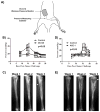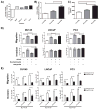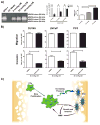Tumor-induced pressure in the bone microenvironment causes osteocytes to promote the growth of prostate cancer bone metastases
- PMID: 25855383
- PMCID: PMC4452392
- DOI: 10.1158/0008-5472.CAN-14-2493
Tumor-induced pressure in the bone microenvironment causes osteocytes to promote the growth of prostate cancer bone metastases
Abstract
Cross-talk between tumor cells and their microenvironment is critical for malignant progression. Cross-talk mediators, including soluble factors and direct cell contact, have been identified, but roles for the interaction of physical forces between tumor cells and the bone microenvironment have not been described. Here, we report preclinical evidence that tumor-generated pressure acts to modify the bone microenvironment to promote the growth of prostate cancer bone metastases. Tumors growing in mouse tibiae increased intraosseous pressure. Application of pressure to osteocytes, the main mechanotransducing cells in bone, induced prostate cancer growth and invasion. Mechanistic investigations revealed that this process was mediated in part by upregulation of CCL5 and matrix metalloproteinases in osteocytes. Our results defined the critical contribution of physical forces to tumor cell growth in the tumor microenvironment, and they identified osteocytes as a critical mediator in the bone metastatic niche.
©2015 American Association for Cancer Research.
Conflict of interest statement
The authors have no conflict of interest to disclose.
Figures




Comment in
-
Prostate cancer: Under pressure-physical force promotes tumour growth.Nat Rev Urol. 2015 Jun;12(6):306. doi: 10.1038/nrurol.2015.95. Epub 2015 Apr 28. Nat Rev Urol. 2015. PMID: 25917891 No abstract available.
References
-
- Kato Y, Windle JJ, Koop BA, Mundy GR, Bonewald LF. Establishment of an osteocyte-like cell line, MLO-Y4. J Bone Miner Res. 1997;12:2014–23. - PubMed
-
- Diresta GR, Nathan SS, Manoso MW, Casas-Ganem J, Wyatt C, Kubo T, et al. Cell proliferation of cultured human cancer cells are affected by the elevated tumor pressures that exist in vivo. Ann Biomed Eng. 2005;33:1270–80. - PubMed
Publication types
MeSH terms
Substances
Grants and funding
LinkOut - more resources
Full Text Sources
Other Literature Sources
Medical

